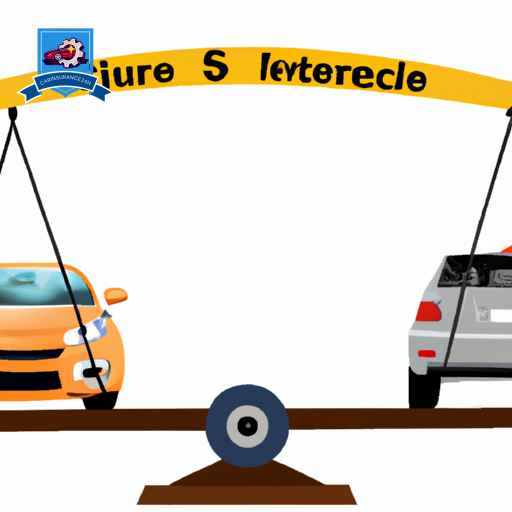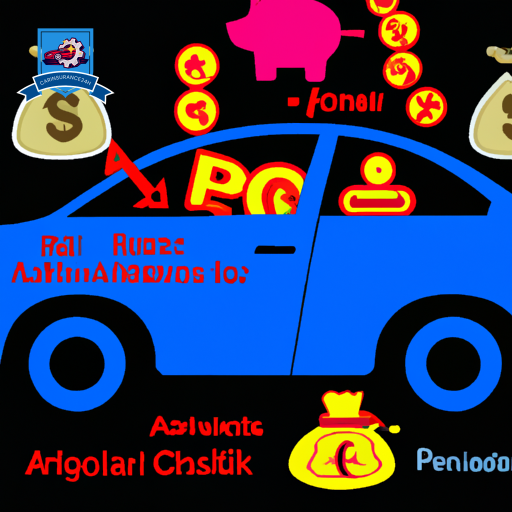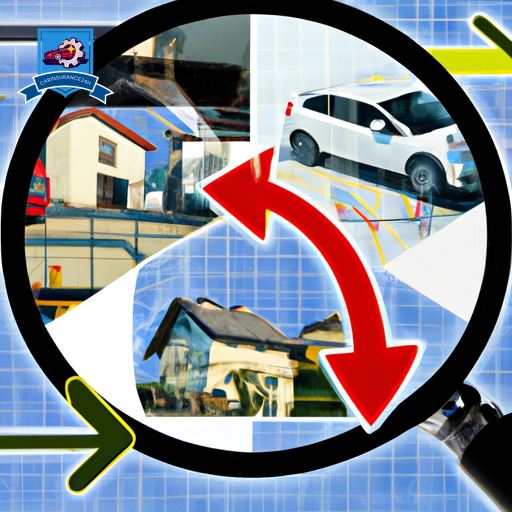The impact of a vehicle’s model on insurance rates is a multifaceted issue, intricately tied to factors such as safety features, theft probability, and repair costs.
For instance, vehicles equipped with advanced safety technologies may benefit from lower insurance premiums due to their reduced risk of accidents, while models with high theft rates or expensive parts may incur higher charges.
Additionally, the vehicle’s performance capabilities, age, and even its environmental efficiency play significant roles in determining insurance costs. Understanding these dynamics is vital for consumers seeking to make informed decisions about their vehicle purchases.
However, the intricacies of how each factor weighs into the final insurance rate remains a complex puzzle, inviting further exploration into the nuances of automotive insurance policies.
Safety Features and Ratings

The inclusion of advanced safety features and favorable safety ratings in a vehicle greatly impacts insurance premiums, as they are key indicators of potential risk and liability for insurance providers. Vehicles equipped with sophisticated driver assistance technology and exemplary crash test performance are perceived as lower risks, which can result in more favorable insurance rates. The rationale behind this is twofold: first, advanced safety features can notably reduce the likelihood of an accident occurring, and also, superior crash test ratings suggest that in the event of a collision, the vehicle’s occupants are better protected, potentially reducing the costs associated with personal injury claims.
Driver assistance technology, such as automatic emergency braking, lane departure warnings, and adaptive cruise control, plays a critical role in preventing accidents. These technologies enhance a driver’s ability to avoid collisions, thereby decreasing the likelihood of filing an insurance claim. Insurance providers analyze data from crash test performance, including frontal, side, and rollover tests, to assess a vehicle’s safety profile. Vehicles that achieve high scores in these assessments are often rewarded with lower insurance premiums.
In a structured analysis of insurance premium determinants, the correlation between enhanced safety features, superior crash test results, and reduced insurance rates is evident. Insurance companies leverage extensive data on vehicle safety to calculate premiums, reflecting the reduced risk associated with safer vehicles. Ultimately, consumers who prioritize safety not only invest in their well-being but also stand to benefit from more economical insurance rates, underscoring the financial advantages of choosing vehicles with advanced safety features and robust crash test performance.
Theft Rates and Risks

The correlation between vehicle models and their susceptibility to theft greatly influences insurance premiums. Models that are frequently targeted for theft present a higher risk to insurers, necessitating adjustments to policy rates.
This section will analyze the factors contributing to a vehicle’s allure to thieves and the subsequent impact on insurance costs.
Popular Targets for Theft
Vehicle models greatly influence theft rates and risks, with certain cars emerging as prime targets for thieves due to their popularity and resale value. Factors such as color influence and geographic location play significant roles in determining a vehicle’s theft risk. For example, some colors may be more attractive to thieves, or certain models may be more vulnerable in specific regions due to higher demand in the illegal resale market.
| Vehicle Model | Color | Geographic Location |
|---|---|---|
| Model X | Black | Urban Areas |
| Model Y | Red | Coastal Regions |
| Model Z | White | Border Towns |
This table illustrates how specific models, colors, and locations intersect to define theft risks, providing insurers and vehicle owners with important data for mitigating potential losses.
Theft Risk Impact
Analyzing theft risk impact reveals that vehicles identified as high-risk are more likely to incur increased insurance rates due to their elevated likelihood of being targeted by thieves. This susceptibility is influenced by various factors, including car model popularity, inherent security features, and market value. However, less obvious factors also play a significant role:
-
Color Influence: Surprisingly, certain vehicle colors are associated with higher theft rates, affecting insurance premiums.
-
Driver Demographics: Insurers consider the typical demographic profile of drivers associated with specific vehicle models, which can influence perceived theft risk.
-
Location and Parking Security: Areas with higher crime rates or inadequate parking security measures can exacerbate the theft risk for specific models.
Repair Costs Variability

One significant factor influencing insurance rates is the variability in repair costs associated with different vehicle models. This variability is not arbitrary but is influenced by several tangible factors, including the availability of parts, the complexity of repairs, and importantly, the model of the vehicle itself. For insurers, understanding these cost variations is important for accurately pricing premiums. Repair costs can vary based on factors such as color influence and regional variations, which may not be immediately apparent to the vehicle owner.
The color of a vehicle, surprisingly, can impact repair costs. Certain colors may be more expensive to match and repaint due to their rarity or the special materials required. This can lead to higher insurance premiums for vehicles in these colors. Insurers take this into account when determining rates, as vehicles that are more costly to repair will naturally necessitate higher coverage costs.
Regional variations also play a critical role. The cost of labor and parts can vary widely from one region to another. In areas where certain vehicle models are more common, parts may be more readily available, reducing repair costs. Conversely, in regions where a vehicle model is rare, the scarcity of parts can increase repair costs. This geographical factor can cause significant variations in insurance rates, as insurers aim to cover the potential higher costs of repairs in certain locales.
Understanding the nuances of repair costs variability is important for both insurers and insured parties. By recognizing the influence of factors such as color and regional variations, vehicle owners can make more informed decisions regarding their insurance needs and potential costs.
Vehicle Age and Depreciation

As vehicles age, their market value depreciates, heavily influencing insurance premiums due to the changing cost-risk ratio. This depreciation is a critical factor for insurance companies when evaluating the risk and determining the insurance rates for different vehicle models. The depreciation rate varies across models, but the general trend indicates a decrease in the vehicle’s value over time, which in turn affects its resale value and the cost to insure it.
The relationship between a vehicle’s age, its depreciation, and insurance premiums is intricate. Insurance companies consider several factors related to depreciation, including the original price of the vehicle, its current market value, and the anticipated depreciation rate over the insurance coverage period. The original price of the vehicle sets the baseline for depreciation calculations. Higher-end models with a steep original price may see a more notable numerical drop in value, though not always a faster depreciation rate, compared to more economical vehicles.
To understand the impact of vehicle age and depreciation on insurance premiums, consider the following:
-
Resale Value: A vehicle’s depreciation directly affects its resale value. As the vehicle loses value, the potential payout in the event of a total loss decreases, which can lead to lower insurance premiums.
-
Risk of Theft: Older vehicles, especially those that have depreciated significantly, often carry a lower risk of theft, which can further reduce insurance costs.
-
Cost of Parts and Repairs: While older vehicles might have lower resale values, the cost of parts and repairs can vary, influencing insurance rates differently depending on the model’s age and availability of parts.
Understanding these aspects helps in grasping why insurance premiums may decrease as a vehicle ages, reflecting the lower financial risk associated with its decreased market value.
Performance and Horsepower

Understanding the depreciation and age of a vehicle provides valuable insights into insurance premiums; similarly, the performance characteristics, including horsepower, greatly influence these rates. Insurers evaluate the risk associated with vehicles that possess high-performance capabilities, recognizing that cars with greater horsepower are often driven more aggressively, potentially leading to a higher likelihood of claims. This risk evaluation is grounded in statistical data that correlates high-performance vehicles with an increased incidence of traffic violations and accidents.
The degree of engine tuning plays a pivotal role in this evaluation. Vehicles that have undergone modifications to enhance performance, particularly those with increased engine power, are viewed as higher risk by insurance companies. These modifications can alter a vehicle’s original performance specifications, leading to challenges in accurately evaluating risk. Consequently, owners of vehicles with engine tuning may face higher premiums due to the perceived increase in risk associated with the enhanced performance capabilities.
Additionally, the intended usage of the vehicle, especially track usage, further impacts insurance rates. Vehicles that are frequently used on racetracks or for competitive driving events are exposed to conditions that greatly increase the likelihood of damage or accidents. Insurers often charge higher premiums for these vehicles to compensate for the elevated risk. In some cases, standard insurance policies may exclude coverage for incidents occurring during track usage, necessitating the purchase of specialized insurance designed for high-performance and racing vehicles.
Popularity and Market Demand

The correlation between a vehicle model’s popularity and its impact on insurance rates is a nuanced aspect of automotive insurance evaluation. Market demand for specific models can notably influence insurance premiums, as higher popularity often translates to increased exposure to theft and accidents.
This section will explore how the attractiveness of certain vehicles and evolving market trends contribute to variations in insurance costs.
Demand Drives Premiums
Market demand and popularity greatly influence insurance premiums for various vehicle models. Insurance companies meticulously analyze market trends to adjust their rates. Two critical factors they consider are fuel efficiency and driver behavior, which are often indicative of a vehicle’s risk profile. Highly demanded models, perceived as fuel-efficient or associated with safer driving behaviors, might see relatively lower premiums. Conversely, vehicles in high demand but linked to riskier driving patterns could attract higher insurance costs.
-
Fuel Efficiency: More efficient vehicles often attract a more cost-conscious and potentially cautious demographic, potentially lowering risk.
-
Driver Behavior: Models popular for their performance and speed might attract a demographic with a tendency toward riskier driving habits.
-
Market Trends: Insurance companies continuously monitor these trends to adjust premiums accordingly, ensuring they reflect the current risk assessment accurately.
Popular Models’ Insurance Impact
Popularity and market demand greatly influence insurance premiums for various popular vehicle models, reflecting their perceived risk and potential cost implications for insurers. These factors, combined with color influence and driver demographics, create a complex pricing landscape. High-demand models may attract a specific driver demographic, potentially affecting risk assessments and, consequently, insurance costs.
| Vehicle Model | Popularity Impact | Considerations |
|---|---|---|
| Sports Cars | High Insurance Rates | Color Influence |
| SUVs | Moderate Rates | Driver Demographics |
| Electric Vehicles | Variable Rates | Market Demand |
This table exemplifies the intricate relationship between a vehicle’s popularity, its appeal to certain demographics, and the nuanced effect of vehicle color on insurance premiums. Understanding these dynamics is vital for consumers aiming to make informed decisions about their vehicle purchases and insurance options.
Market Trends Affect Rates
Understanding the intricate relationship between vehicle popularity and insurance premiums lays the foundation for exploring how broader market trends further influence these rates. Economic fluctuations and demographic shifts are pivotal in shaping the demand for certain vehicle models, subsequently affecting insurance costs. This connection can be distilled into three key points:
- Economic fluctuations often lead to changes in consumer purchasing power, impacting vehicle popularity and insurance rates.
- Demographic shifts, including changes in population age or urbanization levels, can alter vehicle demand patterns.
- Popular models in booming economic periods or within growing demographic segments may see heightened insurance premiums due to increased demand and associated risks.
These factors underscore the dynamic nature of insurance pricing, revealing how market trends extend beyond mere popularity to influence rates directly.
Luxury Models Vs Economy Cars

When comparing luxury models to economy cars, insurance premiums often reflect the substantial cost disparity between these vehicle categories. The reasons behind this are multifaceted, but two primary factors stand out: brand prestige and color psychology. Luxury vehicles, by their nature, are associated with high-end brands that signify status, performance, and, importantly, higher costs. This brand prestige directly influences insurance rates, as the cost of repair or replacement for these vehicles is notably higher than that of economy cars. The materials, technology, and specialized labor required for luxury cars drive up repair costs, and as a result, the insurance premiums.
Additionally, color psychology plays an unexpected but notable role. Luxury cars often come in colors that are considered to be more exclusive or unique, which can be more expensive to replicate in the event of a repair. This contrasts with the more standard and widely available colors of economy cars, which are easier and less costly to match and repair.
The financial implications of insuring a luxury vehicle extend beyond the initial purchase price. Insurers also consider the higher likelihood of theft and the cost of potential liability claims, which are statistically higher for luxury vehicles. Economy cars, offering less with regard to performance and prestige but more with regard to efficiency and cost-effectiveness, represent a lower risk to insurers. This is reflected in their more affordable insurance premiums. Understanding these distinctions is important for consumers making informed decisions about vehicle purchases and their associated long-term costs.
Environmental Impact and Efficiency

Beyond the domains of luxury and economy in vehicle selection, the environmental impact and efficiency of a car greatly influence insurance rates and consumer choice. With a growing awareness of environmental issues, consumers are increasingly gravitating towards vehicles that promise reduced carbon footprints and improved fuel efficiency. This shift in consumer preference is not lost on insurance companies, which now incorporate these factors into their rate calculations.
Vehicles that utilize fuel alternatives, such as electric or hybrid models, often benefit from lower insurance premiums. This reduction is partly due to the perception that owners of such vehicles are more responsible drivers, but also because these cars are seen as less risky from an environmental damage perspective. Furthermore, the operational costs of these vehicles tend to be lower, making them less expensive to insure.
Green incentives offered by insurance companies further sweeten the deal for eco-friendly vehicle owners. These incentives may include:
- Discounts on premiums for vehicles that meet certain environmental standards.
- Reduced rates for low-mileage drivers who contribute less to pollution and road congestion.
- Special rates for alternative fuel vehicles, recognizing their contribution to reducing dependency on fossil fuels.
Such measures not only encourage the adoption of greener vehicles but also reflect a broader commitment to sustainability within the insurance industry. As environmental considerations become increasingly integrated into consumer decision-making, insurance companies align their policies to accommodate and promote this shift. The result is a synergistic relationship between environmental stewardship and economic incentives, fostering a cleaner, more efficient future for road transportation.
Insurance Claim History

Insurance claim history, a critical determinant of premium rates, greatly impacts the cost of insuring a vehicle. This component of the insurance process embodies the record of claims that an individual has filed under their auto insurance policy. Insurers meticulously analyze this data to assess the risk associated with insuring a particular driver, which in turn influences policy coverage terms and premium costs. The rationale behind this scrutiny is straightforward: a history replete with numerous claims is often indicative of a higher risk, leading to elevated insurance premiums.
Moreover, the nature of claims within one’s insurance history—whether they pertain to accidents, theft, or damage from natural disasters—also plays a pivotal role. This is where the model of the vehicle comes into play. Certain vehicle models, by virtue of their design, safety features, and overall durability, may be less prone to damage or may carry lower repair costs. This, combined with a clean claim history, can lead to more favorable insurance terms and lower premiums.
Policy coverage options themselves can be influenced by the claim history. Insurers may offer more competitive rates or more comprehensive coverage to drivers with minimal claims, leveraging their lower perceived risk. Conversely, a fraught claim history may limit policy options or necessitate higher deductibles.
Geographic location further compounds the complexity of how insurance claim history affects rates. Areas with higher rates of accidents or theft may see a magnified impact of claim history on insurance costs, as insurers weigh the compounded risk of both the driver’s individual history and the broader environmental risk factors.
Frequently Asked Questions
How Does the Color of My Vehicle Influence My Insurance Rates?
The color of your vehicle has minimal direct impact on insurance rates. Instead, factors such as color psychology and market trends may indirectly influence premiums through vehicle popularity and theft rates, rather than color alone.
Can Installing Aftermarket Parts or Modifications on My Vehicle Affect My Insurance Premiums?
Installing aftermarket parts or modifications, particularly performance upgrades, on a vehicle can impact insurance premiums due to increased risk and potential warranty implications, necessitating a thorough review by insurers to adjust coverage and rates accordingly.
How Do Insurance Companies Factor in the Driver’s Personal Driving History Alongside the Vehicle Model When Determining Rates?
Insurance companies meticulously analyze a driver’s personal driving history and integrate this data with driver training and policy discounts to precisely calculate insurance rates, demonstrating a structured, analytical approach to risk assessment.
Are There Specific Times of Year When Changing My Vehicle Model Would Be More Advantageous for Lowering My Insurance Rates?
While no specific times universally guarantee lower rates, acquiring vehicles during end-of-year deals may present opportunities for cost savings. Additionally, exploring insurance bundling options at this time can further enhance potential for reduced insurance premiums.
Does the Location Where the Vehicle Is Primarily Parked or Driven (E.G., Urban Vs. Rural Areas) Play a Role in How the Vehicle Model Affects Insurance Rates?
Yes, the location where a vehicle is primarily parked or driven greatly influences insurance rates, with factors such as parking security and weather impact playing important roles in determining the risk profile associated with specific vehicle models.










